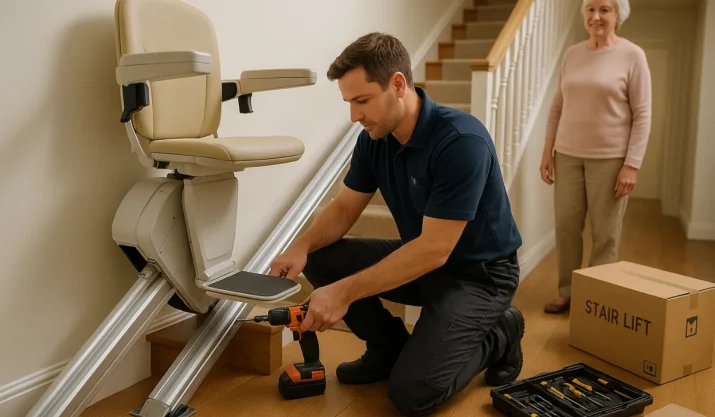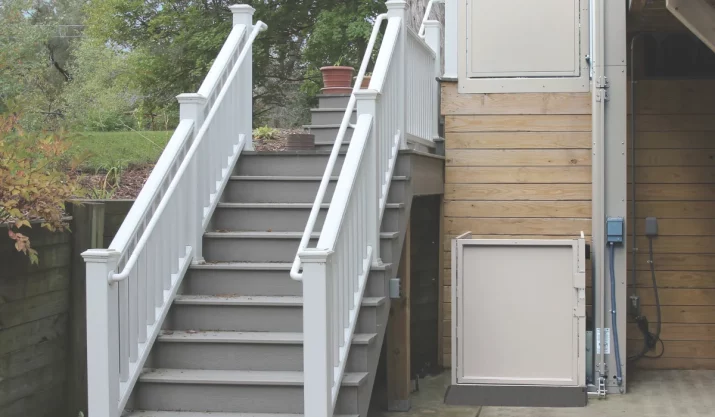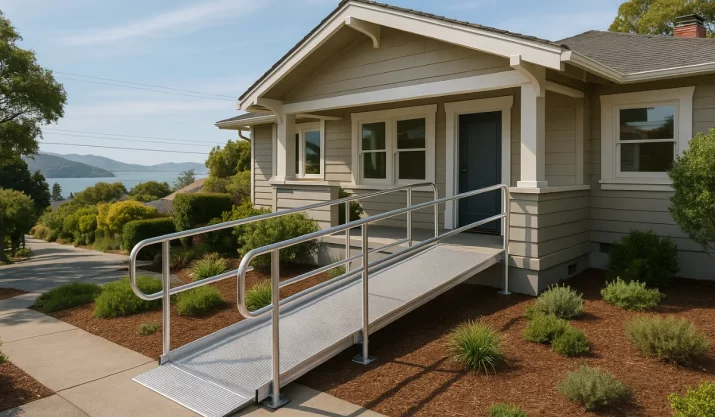How to Know When It’s the Right Time to Install a Home Lift for Your Parents

Table of Contents
- Key Takeaways:
- Recognizing the early signs that your parents may need a home lift
- Why installing sooner can help your parents age in place
- Comparing your options: stairlifts, home elevators, and platform lifts
- Why safety should guide your decision
- How to fit a lift into your parents’ home
- Financial considerations and long-term planning
- Final thoughts
- FAQs
Everyday activities like climbing stairs can become challenging for your parents as they get older. Deciding when to install a home lift for aging parents isn’t just about convenience. It’s about meeting your aging parents’ safety, independence, comfort, and access needs at home.
In this guide, we’ll talk about why a chair lift is a good investment for your parents’ home and what signs you can look out for. We’ll also help you compare home lift options that improve your parents’ comfort and help you feel secure about their mobility needs.
Key Takeaways:
- Installing a home lift helps your aging parents stay safe, independent, and access every level of their home.
- Signs like avoiding stairs or needing handrails may mean it’s time for a lift.
- There are many accessibility device options you can consider for your home’s layout. Standard options include stairlifts, platform lifts, and residential elevators. Each device supports specific mobility challenges and suits different types of homes.
- Taking action early can lower the risk of falls, make aging in place more practical, and even delay the need for assisted living.
Recognizing the early signs that your parents may need a home lift
Your parents may start having trouble walking or climbing stairs as they age. These early mobility issues might begin with slower movement on the stairs, but can quickly turn into serious challenges that affect their safety and independence.
Common signs it’s time to consider a home lift or residential elevator include:
- Frequent use of handrails to steady themselves
- Skipping trips upstairs to avoid the climb
- Shortness of breath or fatigue after one flight
- Avoiding areas of the home because they’re on a different level
- Recovering from a surgery or injury that limits movement
Introduce mobility support as soon as these challenges start affecting your parents’ daily routine. There are a variety of mobility support devices available, including stairlifts, platform lifts, and home elevators, to ensure your loved one’s safety and address their access needs.
Why installing sooner can help your parents age in place
Falls are common in older adults and often cause lasting harm, like fractures or head injuries.
However, many older people would rather stay in their homes than move into assisted living facilities. You can help them stay safe by adding a home elevator and making the house easier to move around. Having mobility devices in your home can allow your aging parent to enjoy familiar spaces that they would struggle to access otherwise.
With older adults having a higher fall risk, adding mobility support at home can help prevent dangerous falls. Planning ensures you choose the right model and prevents rushed decisions after an injury.
Comparing your options: stairlifts, home elevators, and platform lifts
Everyone’s mobility needs are different. The correct device for one person may not be suitable for another.
Here’s how the main types of mobility devices compare:
- Stairlifts – Ideal for straight staircases and small spaces. If you have a narrow home, a straight stairlift is a good choice.
- Platform lifts – Perfect for wheelchairs and other mobility devices. Homeowners with mobility challenges use VPLs for short vertical travel, such as between a garage and the first floor.
- Home elevators – Provide the smoothest, most versatile ride for multiple floors. Residential elevators are handy when moving heavy items or assisting elderly parents who rely on caregivers.
If you are anticipating that your parents’ mobility will continue to decline, a home elevator may be your best choice. A home lift provides long-term benefits for independent living and quality of life.
Why safety should guide your decision
Falls are a significant concern for older adults, especially on stairs. According to the CDC, they’re a leading cause of injury, and many seniors never fully bounce back after one. That’s why many homeowners choose to install a lift to prevent accidents before they happen.
Making your home more accessible can significantly reduce these risks while giving them the freedom to move between floors.
Simple changes like adding handrails, widening doorways, and using slip-resistant flooring near the lift entrance can make the space even safer. These changes help keep both your aging parents and visiting family members safe.
How to fit a lift into your parents’ home
Before installing any lift, assess your parents’ home for available space and access points. You can have residential elevators built into existing closets, corner spaces, or as part of a new addition.
Homeowners with small spaces can still install a home lift, as there are residential lifts with small footprints available. You can install these elevators without needing to do significant renovations to your home.
Many California homes now have multi-level layouts. If you or your parents own a multi-level house, ensure your home lift fits seamlessly into the design and meets your daily needs.
Financial considerations and long-term planning
Cost is essential, but consider it an investment in maintaining independence and avoiding assisted living expenses. A home lift or elevator can also raise property value and appeal to future buyers who want built-in accessibility.
Some families treat it as a shared investment among adult children, especially if they plan to keep the house in the family.
Final thoughts
A home lift for your aging parents is more than a convenience. It’s an investment in their safety, independence, and comfort. By spotting early signs of limited mobility, exploring mobility solutions, and planning, you’ll be making choices that help them stay safe and independent.
At California Mobility, our team includes Certified Aging-in-Place Specialists (CAPS) trained to recommend and implement home modifications for homeowners who want to ensure their loved one’s safety, or seniors who wish to age in place.
Our trained specialists combine technical expertise with personalized guidance to deliver the best solution for your needs.
Contact us to schedule a home assessment. We’re here to help your loved ones live safely and comfortably at home.








